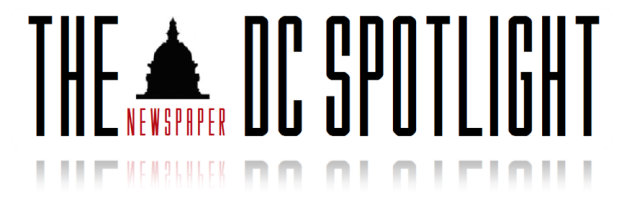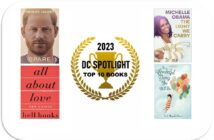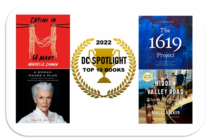October 1, 2011
Miriam Laufer
News Writer
Books: Top 10 List
Amy Tan Is Not a Courtesan
The Valley of Amazement by Amy Tan
That’s right, folks, you heard it here first. Although Amy Tan’s upcoming book The Valley of Amazement is self-described as “racy,” she declares it is “not autobiographical.” Amy Tan is known for her fiction’s insightful exploration of the relationships between mothers and daughters, and some of that material is based on her own experience. From the audience at George Mason University’s Center for the Arts, Alan Cheuse (National Public Radio’s “voice of books”) interviewed Tan onstage. The event was part of the 13th Annual Fall for the Book Festival, where Tan received the Fairfax Prize from the Fairfax Library Foundation. Cheuse began, “We’ve known each other for some decades now…” and proceeded to help the audience get to know her as well. He asked about her childhood, her experiences as a writer, and the new book she’s working on now.
Tan’s responses to the questions about her childhood and especially about her mother are illuminating for any reader of her books. “My mother believed in all kinds of things, ghosts, karma…She believed I was the result of something bad she had done in a former life,” Tan said. In her descriptions of her mother’s peculiarities, one can see the genesis of some of her books. For example, The Hundred Secret Senses, where ghosts and yin people abound, and one of the narrators atones for her deeds in a former incarnation. Tan notes, “I thought I had a really weird childhood. [When The Joy Luck Club came out], I was disconcerted to find that other people had had the same weird childhood.” This is Tan’s audience, anyone who has ever had a difficult relationship with their mother or daughter, sister or grandmother. Her audience also includes anyone who has a family full of restless ghosts or wishes they did. Yet, while Tan’s new book is inspired by her grandmother, she’s sure it’s not what her readers have come to expect of her.
As Tan talked about her experience at the Squaw Valley Community of Writers, where she met Cheuse and her fiction career began, she spoke about her relationship with writer Molly Giles. She calls Giles her “outhouse editor.” They met at Squaw Valley, and Giles has helped Tan throughout her career with her “unsparing criticism,” one of which may have come back to haunt her. At the event, Tan graced us with a reading from her unpublished manuscript, which she said she had never read in public. She read from a section entitled “Etiquette for Beautes of the Boudoir,” and spoke in the voice of an aging courtesan who is the attendant of a young virgin courtesan, Violet, in 1912 Shanghai.
As she began to read, it seemed the presence of her character had overtaken her body. She assumed a tone of instruction, “I may be old, but remember, when I was 19, I was one of the ten beauties of Shanghai…” Tan accompanied the frank discussion with significant glances to the audience, as the older courtesan warns the younger that if she does not want to “wear out her insides,” she will learn a song for every suitor and how to play on the emotions of every type of man.
While this book is avowedly not autobiographical, like Tan’s other books, it does have its roots in her family’s past. She spoke about encountering photos of her grandmother dressed in the same outfit as courtesans in Shanghai. She suspects it is “quite possible she had been a courtesan.” She wonders, “What is it about my grandmother that passed on to my mother that passed on to me?” That, she said, is “my prevailing interest as I write this story.” If that’s so, this book will resonate with Tan’s audience positively. If it’s a little racier than usual, she says the audience can chalk it up to Tan’s “great imagination,” and “the research I had to do…wow.”
1. Unlikely Brothers
by John Prendergast and Michael Mattocks, 2011
Before John Prendergast was a well-known peace activist and founder of the Enough Project, he volunteered as a Big Brother to Michael Mattocks. While Mattocks grew up on the streets, Pendergast traveled to African war zones, but the two continued to stay in contact when they could. The two men write about this unlikely relationship that changed both of their lives.
2. The End of Anger
by Ellis Cose, 2011
Ellis Cose investigates changes in attitude of the middle-class black community, from declining rage to growing optimism. He bases his findings on numerous interviews and two large surveys, one of black Harvard MBAs and the other of graduates of A Better Chance, a program that sends young people of color to elite schools. Cose’s work is important in understanding a generational shift in attitude toward the implications of racism and discrimination in America.
3. Jacqueline Kennedy: Historic Conversations on Life with John F. Kennedy
by Michael Beschloss, 2011
Caroline Kennedy and the Kennedy family decided to release these historic conversations for the 50th anniversary of John F. Kennedy’s presidency. Presidential historian Michael Beschloss introduces and annotates these transcripts of the tapes, which provide a fascinating insight into the JFK presidency. The tapes illuminate Jacqueline Kennedy’s role in the administration and provide her intimate and sometimes surprising take on her experiences in the White House.
4. That Used to Be Us: How America Fell Behind in the World It Invented
by Thomas L. Friedman and Michael Mandelbaum, 2011
Pulitzer Prize-winning author Friedman and American foreign policy expert Mandelbaum describe America’s current global political and economic challenges, and offer their solutions. This timely book echoes the fears of American citizens, but also suggests that it’s not too late to change.
5. The Night Circus
by Erin Morgenstern, 2011
The Night Circus spins the tale of young Celia and Marco, trained in extraordinary ways and doomed to be pitted against each other in a mysterious and ominous contest. Morgenstern evokes a dark, powerful world, filled with the strange creatures and sensibilities of the circus. A book not to be missed.
6. Pigeon English
by Stephen Kelman, 2011
Nominated and shortlisted for the Man Booker Prize, Pigeon English is the story of a young boy from Ghana who joins the rough life of street gangs in London. The book gets its appeal from the naivete and slang of its narrator, even as he describes the horrific deeds surrounding him and the reader becomes aware of the moral quandaries of his life.
7. The Magician King
by Lev Grossman, 2011
The sequel to The Magicians, which haunted fans of Harry Potter and the Chronicles of Narnia with its adult take on wizard life and a malevolent fantasy realm, The Magician King follows Quentin and his friends as they become kings and queens of Fillory, but a fruitless quest finds them transported back to depressing reality. Grossman plays on his readers’ nostalgia while providing them with a genuine escape.
8. Ready Player One
by Ernest Cline, 2011
Ready Player One immerses the reader in a futuristic universe filled with ’80s pop culture trivia, and geeky references from video games, comics, and cult classics. Most people spend their time in a virtual universe called the Oasis, where the inventor James Halliday has left behind clues after his death for the lucky winner of his fortune. The school-aged protagonist Wade Watts competes for the prize with representatives of a corporation that wants to monetize the Oasis. A thrilling romp for geeks of all kinds.
9. It’s Classified
by Nicolle Wallace, 2011
Set in the White House, the sequel to the highly praised Eighteen Acres, follows female president Charlotte Kramer as she embarks on another term in office, with more secrets and danger on her heels. When a classified secret gets out, it’s clear there’s a leak at the top. Wallace’s experience as White House communications director to George W. Bush lends a visceral reality to her portrayal of politics up close.
10. Destiny of the Republic: A Tale of Madness, Medicine, and the Murder of a President
by Candice Millard, 2011
Millard’s passionate and careful reconstruction of the 80 days surrounding James Garfield’s assassination will have readers thinking about Garfield’s place in history and the crucial medical improvements that followed his death. Millard explains that Garfield did not die from the bullet wounds inflicted by would-be assassin Charles Guiteau, but by the ignorant intervention of Dr. Doctor Willard Bliss, who placed Garfield under his care and proceeded to repeatedly probe in his back with unsterilized hands. A must read for those interested in neglected areas of history.



